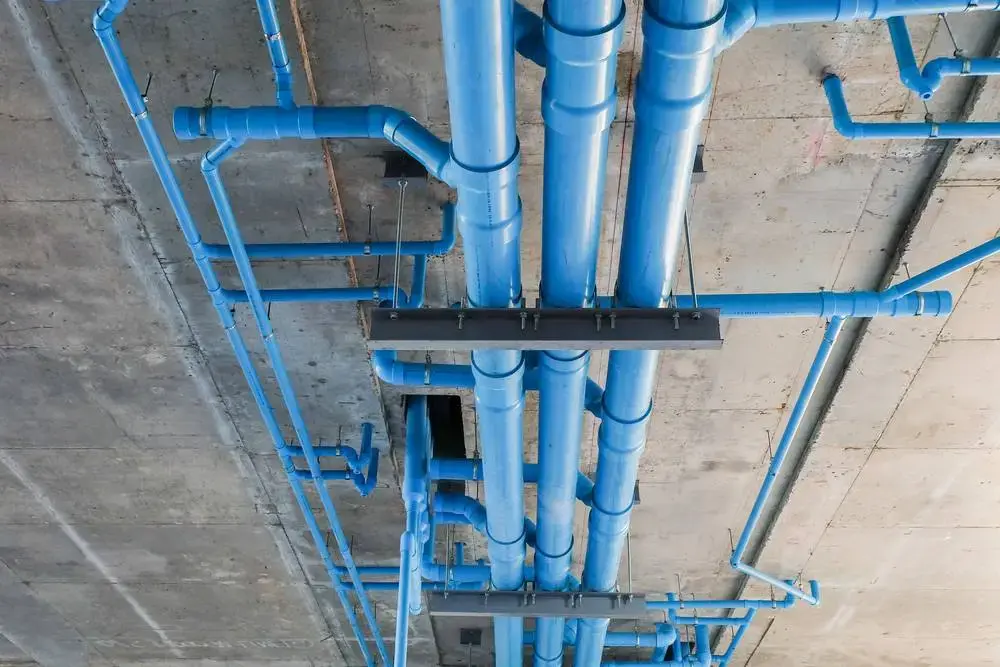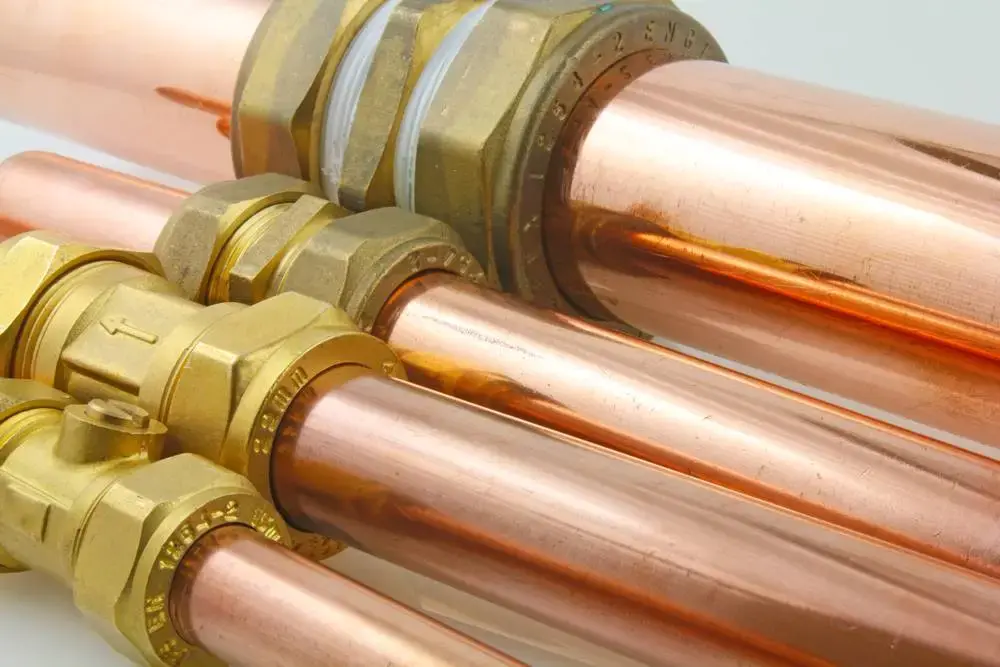The cold water systems we design are sustainable without any risk of contamination, premature equipment breakdowns, or low service pressures.
We ensure that all the cold water supplied through every building plumbing system we design is safe, healthy, reliable, and always on tap.
We design cold water systems that are reliable now and into the future by identifying any possible operational failures prior to construction.

The design of cold water supply systems has its own specific demands; it is part of a much greater plumbing design required during the planning phase of any building. This, of course, includes hot water system design, vent piping design, hot water heater, hot water return system design, and of course sanitary system design. Often, kitchen, laundry, and bathroom design is also included in the overall plan. All these elements of MEP are included in our services. NY Engineers ensure that the cold water system in your building operates properly with the correct pressure and flow rate, irrespective of the height of the building.
We are one of the fastest growing MEP design firms in the construction industry. We pride ourselves on having a fast turnaround while providing cost effective solutions. We are licensed in 50 states and are your one stop shop for all MEP design needs.
We are licensed in all 50 states!
We design to the perfection
Enjoy our lightening fast turnaround
We have completed so far!
Our designs are approved by DOB in one go
The best service experience in the market
Every building needs an adequate supply of potable water for drinking and for personal hygiene, as well as general activities that include cleaning, cooking, and, in industrial settings, various manufacturing processes.
Every city has its own infrastructure and regulations that govern the supply of water to building owners. For instance, in New York, the New York City (NYC) Department of Environmental Protection (DEP) is responsible for water management and operates and maintains the city’s water system. In Chicago, water management is the responsibility of the city’s Department of Water Management.
In addition to the American National Standard, the Uniform Plumbing Code (UPC) that provides minimum standards and requirements for plumbing, all cities have their own building and plumbing codes. These dictate standards and minimum specifications that relate to every element of the building process including cold water system design and construction.
The plumbing engineering design team at Nearby Engineers New York Engineers understands all the ramifications of the complex water infrastructures we deal with. We also have a deep knowledge and many years of experience of the various plumbing codes and how they relate to different buildings and dwelling units in terms of cold water supply. These include the NYC Plumbing Code that we work with on a daily basis.
Additionally, we have a thorough insight of standards and guidelines published by the American Water Works Association (AWWA), the American Society of Civil engineers (ASCE), and the Ten State Standards: the Recommended Standards for Water Works.
Water systems, including cold water systems, must be designed by professional engineers who are licensed in the state they operate in. Complex projects require the involvement of structural, mechanical, engineering, and plumbing specialists, which is one of the reasons our experienced MEP engineers can guarantee fast turnaround times.
Water quality is a vital consideration for any MEP engineer designing a cold water system. The NYC Plumbing Code requires that all the city’s water comes from a reliable source of potable water, preferably an existing public water main that is maintained by the city. More specifically, the code states that all potable water must be “free from impurities present in amounts sufficient to cause disease or harmful physiological effects and conforming to the bacteriological and chemical quality requirements of the New York State Sanitary Code.”
Occasionally, potable public water supplies are not available and we are forced to find other sources. But we cannot do this without approval from DEP, the Commissioner of Buildings of the City of New York, and the Department of Health and Mental Hygiene. The requirements for these sources of water are very strict and the usual flow rates and pressure requirements apply. Before the water can be linked to the cold water system, the local authority must approve it to ensure the quality is up to standard.
Clearly, consideration of health is paramount, and only potable water may be supplied to taps and other plumbing fixtures that supply houses, apartments, and other buildings with water that will be used for drinking, bathing, for culinary use, or to process food, or pharmaceutical and medical products. It is the responsibility of the MEP designers, including NYE MEP engineers, to ensure that the water supply system delivers water to the plumbing fixtures at the pressures and rates specified in the Code. We take this responsibility very seriously.
It’s not just the quality of the water supplied, it is also the cold water system design and the way the system is connected, that matter. If connections aren’t done correctly, there is a danger that even well-designed potable water systems could be contaminated by cross-connection that allows contaminants to reverse flow (or backflow) from sanitary fixtures back into the pipes that carry potable water. The NYC Plumbing Code requires that water service pipes and building sewers are separated by at least 5 feet (1,524 mm) of earth that has not been disturbed. Since this often isn’t possible, the alternative is to compact the earth thoroughly.
Our NYE professionals design cold water systems holistically to ensure that correcting one water quality problem doesn’t lead to a different problem or amplify an existing one. For instance:
Any cold water supply system comprises a myriad of pipes that deliver water to taps, appliances, firefighting equipment, and wherever else it is needed. The design itself must conform to accepted engineering practice as well as all relevant building and plumbing codes. Not only is it vital that there isn’t flow between different piping systems (hot and cold water supply for instance), but the distribution system and pipes included in the system must also meet the criteria specified in the plumbing code.
Water distribution system design criteria include pipe sizes that will cope with peak demand conditions and specified capacities. The minimum flow rate and flow pressure for appliances and fixtures must be in accordance with installation instructions provided by manufacturers.
But it’s not just the pipework that NYE and other MEP engineers have to work with during the design stage. A thorough understanding of everything from excavation and structural safety to the inclusion of fixtures and fittings is vital, depending of course on the type of building involved. Undoubtedly, good design begins with thorough planning and there is a constant need to ensure that the water infrastructure, supply requirements, and the capacity of the water system are all compatible.
Demand is another vital factor that must be estimated before the water system is designed. This relates directly to the size and type of building including daily activities that take place in the building. Broadly speaking, these might be commercial, industrial, public, recreational, or domestic. There are various procedures for estimating water demand, one of which is provided in the UPC. MEP engineers also differentiate between total consumptive demand and the requirements relating to productivity. A vital element in terms of future productivity is inevitable distribution system leakage (DSL) that results from normal wear and tear.
Also, while the design of cold water supply systems has its own specific demands, it is part of a much greater plumbing design required during the planning phase of any building. This, of course, includes hot water system design, vent piping design, hot water heater, hot water return system design, and of course sanitary system design. Often, kitchen, laundry, and bathroom design is also included in the overall plan. All these elements of MEP are included in our services.
We ensure that the cold water system in your building operates properly with the correct pressure and flow rate, irrespective of the height of the building.

Both water service and water distribution pipes carry cold water, but water service pipes extend from the source of potable water to buildings while water distribution pipes are found inside buildings.
All water service pipes must be the size that is suitable for the quantity of water that will be delivered as well as the pressure required in the relevant plumbing code.
Generally, all water service pipes should be at least 1 inch or 25 mm in diameter. It stands to reason, that they have to be separate from sewers to prevent any possible contamination. Pipelines for cold water used for fire fighting (fire flow) must be at least 6 inches in diameter. MEP engineers take the distance between buildings into account when estimating the required fire flow.
In New York, the installation of all new cold water service pipes must be done in accordance with the DEP regulations. MEP designers must also ensure that there is a meter installed in a position approved by the DEP, and the service pipe, house control valve, and this meter must be kept exposed at all times. If a homeowner or owner of a commercial or industrial building covers this over they will be in contravention of the regulations.
There are always very strict regulations in terms of connections to the water mains of any city and these are supplied by the local authority. Owners of buildings pay for all costs.
Fixture supply pipes (which are part of the water distribution network) must be specified in the water distribution system design in accordance with the minimum sizes allowed by the local authority.
Minimum pipe sizes are specified for different fixtures (bathtubs, kitchen sinks, urinals, showers, WCs, and so on), as is the minimum flow rate and flow pressure required. So for instance, in the NYC Plumbing Code:
Maximum flow rates and consumption are provided for a handful of plumbing and fixture fittings including lavatories, water closets (WC), sink faucets, and showerheads. These are all different from one another.

Permissible materials for water service and water distribution pipes are also specified by local codes. Those listed in the American National Standard UPC are copper and copper alloy tube, various approved plastic materials, galvanized steel, and stainless steel.
The NY Plumbing Code allows brass pipe, copper or copper-alloy pipe or tubing, ductile iron water pipe, and stainless steel pipe for water service pipes above the ground. The Code allows brass pipe, copper or copper-alloy pipe or tubing, copper or copper-alloy pipe or tubing to be used for water distribution pipework. Each type must comply to specify standards mentioned in the Code. Sub-surface pipes must comply with standards listed in the DEP rules and regulations.
While some cities do use various types of plastic pipe for plumbing, including chlorinated polyvinyl chloride (CPVC), there are restrictions in both New York City and Chicago that limit its use. In NYC plastic may be used in drain-waste-vent (DWV) systems, but only in residential buildings of a certain height. In Chicago, CPVC may be used but only for reclaimed or secondary water piping systems. It may also be used for DWV in residential buildings that aren’t higher than three stories.
Even though lead pipes are no longer used for plumbing worldwide, pipes, pipe and fixture fittings, joints, faucets, and valves that have a lead content of no more than 0.25% may be used for potable water in NYC provided they also comply with NSF/ANSI 372: Drinking Water System Components – Lead Content. This is the American national standard established to minimize lead contaminants in drinking water. Products that comply have the NSF mark, which is recognized and accepted globally.
Until about 1961, homes in NYC often had water service and distribution pipes that were made from lead. Lead solder was also widely used for internal plumbing until the mid-1980s.
382 NE 191st St , Suite 49674
Miami, Florida 33179276 5th Avenue, Suite 704 #904
New York, NY 10001